Complete Solutions to MULTIPLE CHOICE QUESTIONS of chapter JEE ADVANCED of Class 12 book with complete answers and questions
| Class 12 | PHYSICS |
| Chapter | JEE ADVANCED |
| JEE ADVANCED | MULTIPLE CHOICE QUESTIONS |
| Number Of Questions | 22 |
| Academic Year | 2023-24 |
In the experiment to determine the speed of sound using a resonance column,
02:05View SolutionA student performs an experiment to determine the Young's modulus of a wire, exactly `2m` long, by Searle's method. In a particular reading, the student measures the extension in the length of the wire to be `0.8`mm with an uncertainty of `+- 0.05mm` at a load of exactly `1.0kg`, the student also measures the diameter of the wire to be `04mm` with an uncertainty of `+-0.01mm`. Take `g=9.8m//s^(2)` (exact). the Young's modulus obtained from the reading is
04:39View SolutionA particle moves in the `xy` plane under the influence of a force such that its linear momentum is `vecP(t) = A [haticos(kt)-hatjsin(kt)]`, where `A` and `k` are constants. The angle between the force and momentum is
01:43View SolutionA small object of uniform density rolls up a curved surface with an initial velocity v. it reaches up to a maximum height of `(3v^2)/(4g)
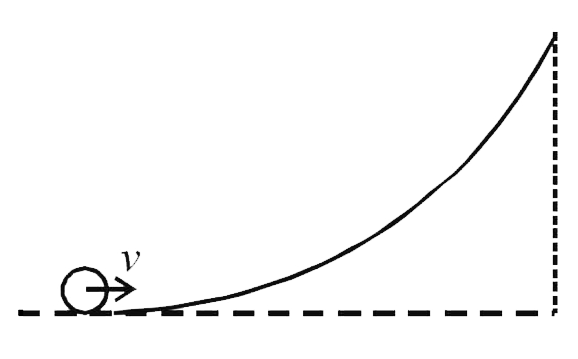
with respect to the initial position. The object is01:13View SolutionWater is filled up to a height h in a beaker of radius R as shown in the figure. The density of water is `rho,` the surface tension of water is T and the atmospheric pressure is `P_0.` Consider a vertical section ABCD of the water column through a diameter of the beaker. The force on water on one side of this section by water on the other side of this section has magnitude
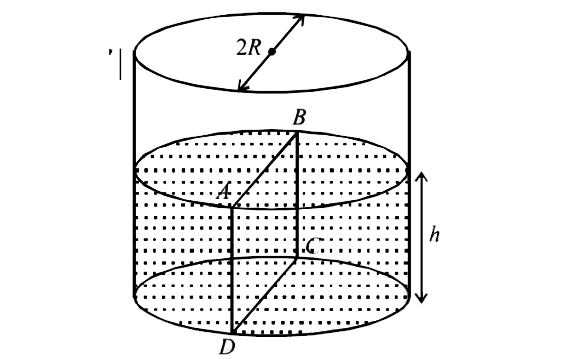 04:36View Solution
04:36View SolutionA spherical portion has been removed from a solid sphere having a charge distributed uniformly in its volume as shown in the figure. The electric field inisde the emptied space is
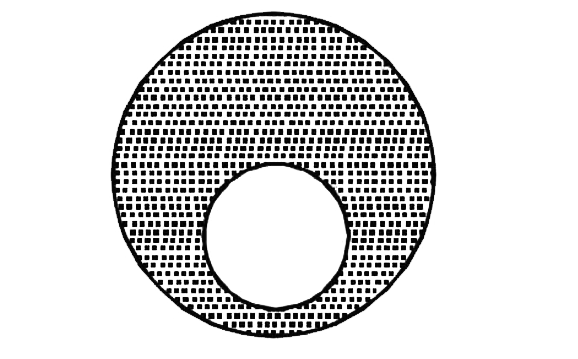 05:20View Solution
05:20View SolutionPoistive and negative point charges of equal magnitude are kept at `(0, 0, a/2)` and `(0, 0, (-a)/(2))` respectively. The work done by the electric field when another poistive point charge is moved from `(-a, 0, 0)` to `(0, a, 0)` is
03:25View SolutionA magnetic field ` vec(B) = B_(0)hat(j)` , exists in the region `a ltxlt2a` , and `vec(B) = -B_(0) hat(j)` , in the region `2a lt xlt 3a`, where `B_(0)` is a positive constant . A positive point charge moving with a velocity `vec(v) = v_(0) hat (i)` , where `v_(0)` is a positive constant , enters the magnetic field at `x= a` . The trajectory of the charge in this region can be like
 02:58View Solution
02:58View SolutionElectrons with de-Broglie wavelength `lambda` fall on the target in an X-ray tube. The cut-off wavelength of the emitted X-ray is
03:31View SolutionSatement-1: if there is no external torque on a body about its centre of mass, then the velocity of the center of mass remains constant.
Statement-2: The linear momentum of an isolated system remains constant.03:04View SolutionSTATEMENT-1: A cloth covers a table. Some dishes are kept on it. The cloth can be pulled out without dislodging the dishes from the table.
STATEMENT-2: For every action there is an equal and opposite reaction.02:33View SolutionStatement I: A vertical iron rod has coil of wire wound over it at the bottom end. An alternating current flows in the coil. The rod goes through a conducting ring as shown in the figure. The ring can float at a certain height above the coil.
Statement II: In teh above situation, a current is induced in he ring which interacts with the horizontal component of teh magnetic field to produce an average force in the upward direction.
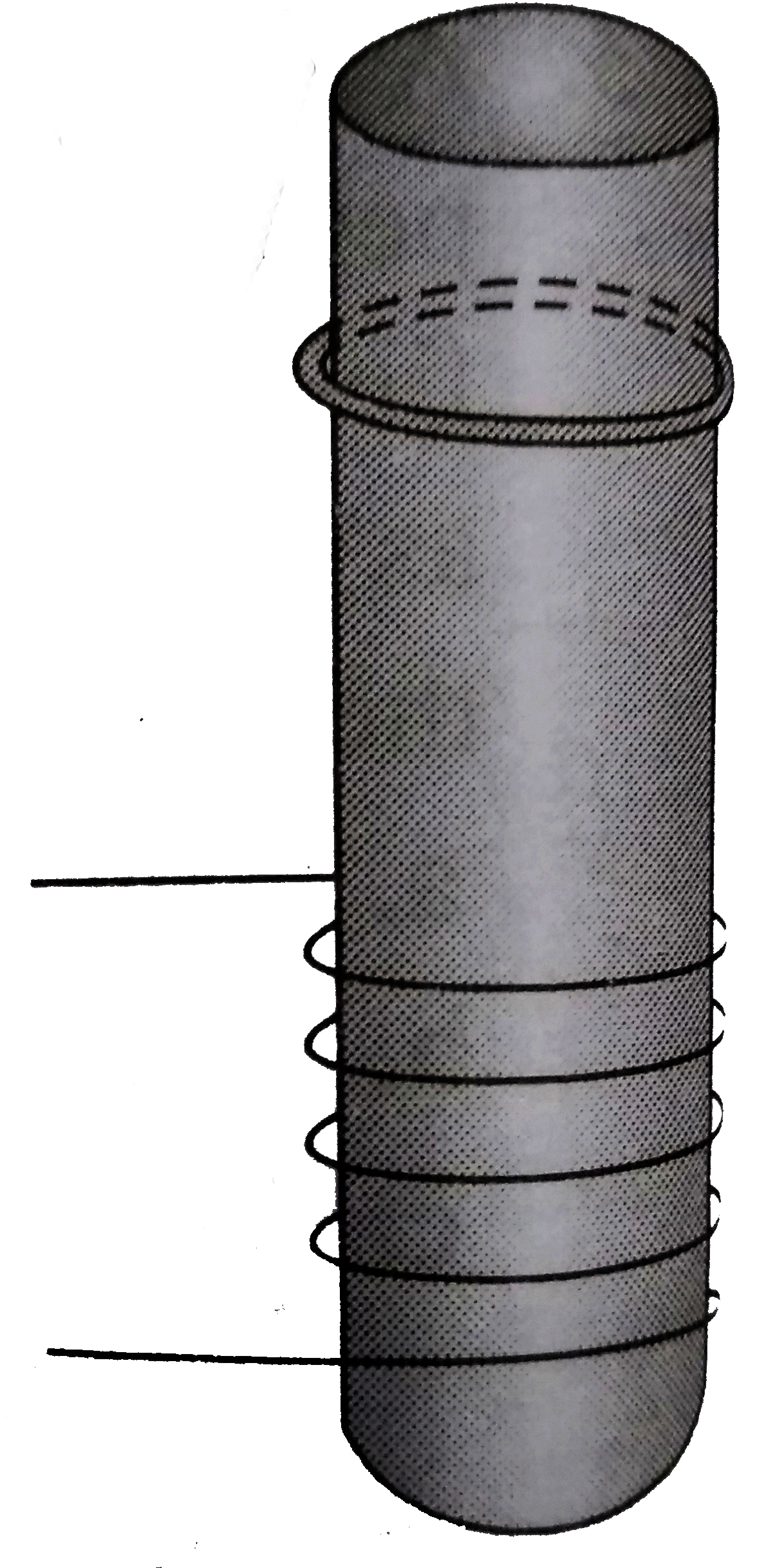 01:56View Solution
01:56View SolutionStatement-1: The total translational kinetic energy of fall the molecules of a given mass of an ideal gas is 1.5 times the product of its pressure and its volume because.
Statement-2: The molecules of a gas collide with each other and the velocities of the molecules change due to the collision.02:49View SolutionTwo trains `A and B` moving with speeds `20m//s` and `30m//s` respectively in the same direction on the same straight track, with `B` ahead of `A`. The engines are at the front ends. The engine of train `A` blows a long whistle.
Assume that the sound of the whistle is composed of components varying in frequency from `f_(1) = 800 Hz` to `f_(2) = 1120 Hz`, as shown in the figure. The spread in the frequency (highest frequency - lowest frequency) is thus `320 Hz`. The speed of sound in still air is `340 m//s`.
(4) The speed of sound of the whistle is10:09View SolutionTwo trains `A and B` moving with speeds `20m//s` and `30m//s` respectively in the same direction on the same straight track, with `B` ahead of `A`. The engines are at the front ends. The engine of train `A` blows a long whistle.
Assume that the sound of the whistle is composed of components varying in frequency from `f_(1) = 800 Hz` to `f_(2) = 1120 Hz`, as shown in the figure. the spread in the frequency (highest frequency - lowest frequency) is thus `320 Hz`. the speed of sound in still air is `340 m//s`.
(5) The distribution of the sound intensity of the whistle as observed by the passengers in train `A` is best represented by10:09View SolutionTwo trains `A` and `B` are moving with speeds `20 m//s` respectively in the same direction on the same stright track, with `B` ahead of `A`. The engines are at the front ends. The engines of train `A` blows a long whistle.
Assume that the sound of the whistle is composed of components varying in frequency from `f_(1) = 800 Hz` to `f_(2) = 1120 Hz`, asz shown in figure. The spread in the frequency (highest frequency - lowest frequency) is thus `320 Hz`. The speed of sound in still air is `340 m//s`.

The spred of frequency as observed by the passengers in train `B` is04:35View SolutionLight travels as a
02:58View SolutionFig. shows a surface XY separating two transparent media, medium 1 and medium 2. Lines ab and cd represent wavefronts of a light wave travelling in medium 1 and incident on XY. Line ef and gh represent wavefront of the light wave in medium 2 after rafraciton.

The phase of the ligth wave at c, d, e, and f are `phi_(c)`, phi_(d), `phi_(e)` and `phi_(f)`, respectively. It is given that `phi_(c ) != phi_(f)`. Then03:10View SolutionSpeed of light is
03:34View SolutionColumn I describes some situations in which a small object moves. Column II describes some characteristics of these motion. Match the situtions in column I with the characteristics in column II.

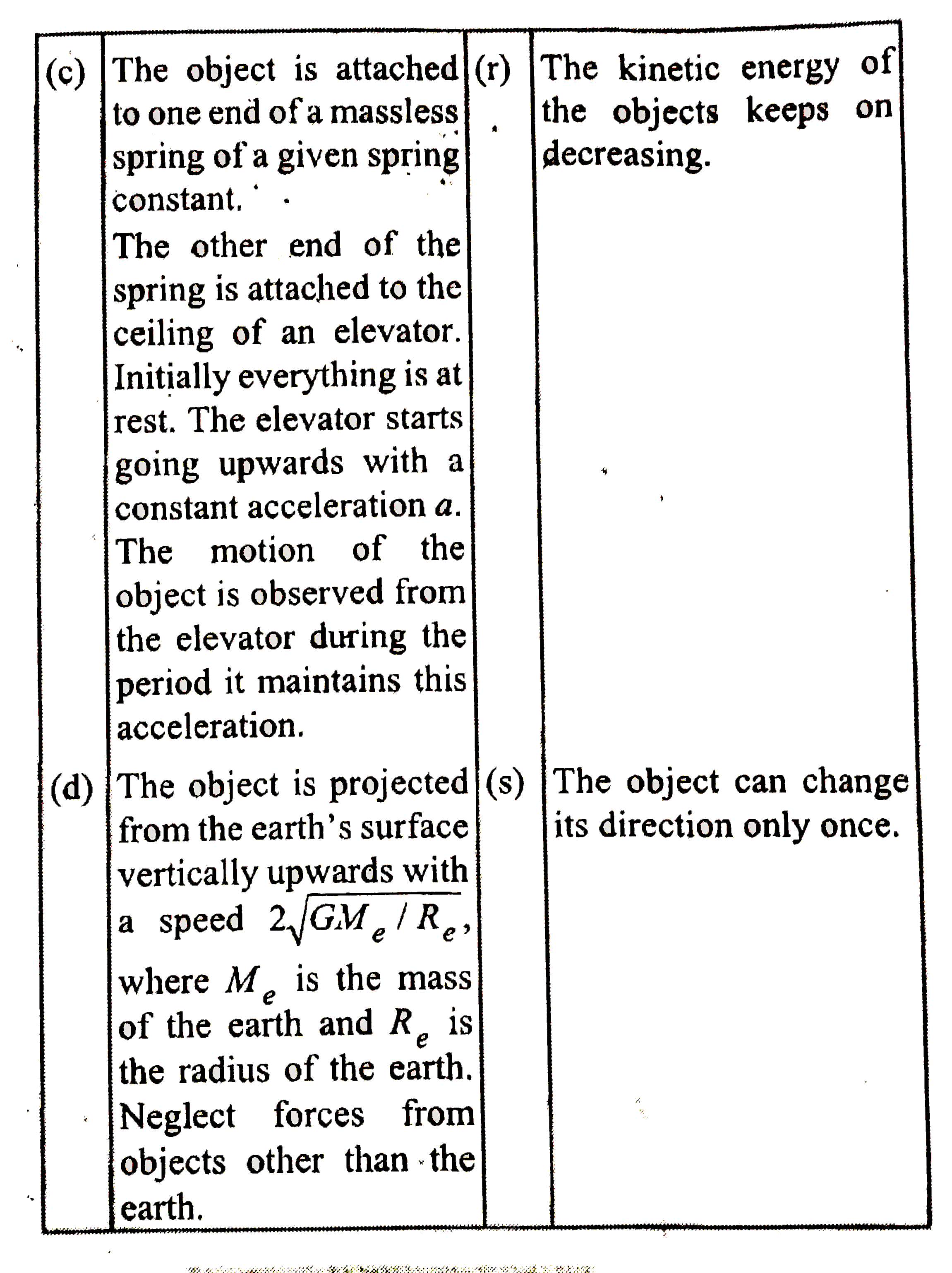 20:14View Solution
20:14View SolutionTwo wires each carrying a steady current I are shown in four configurations in Column I. Some of the resulting effects are described in Column II. Match the statements in Column I with the statements in Column II and the indicate your answer by darkening appropriate bubbles in the `4xx4` matrix given in the ORS.
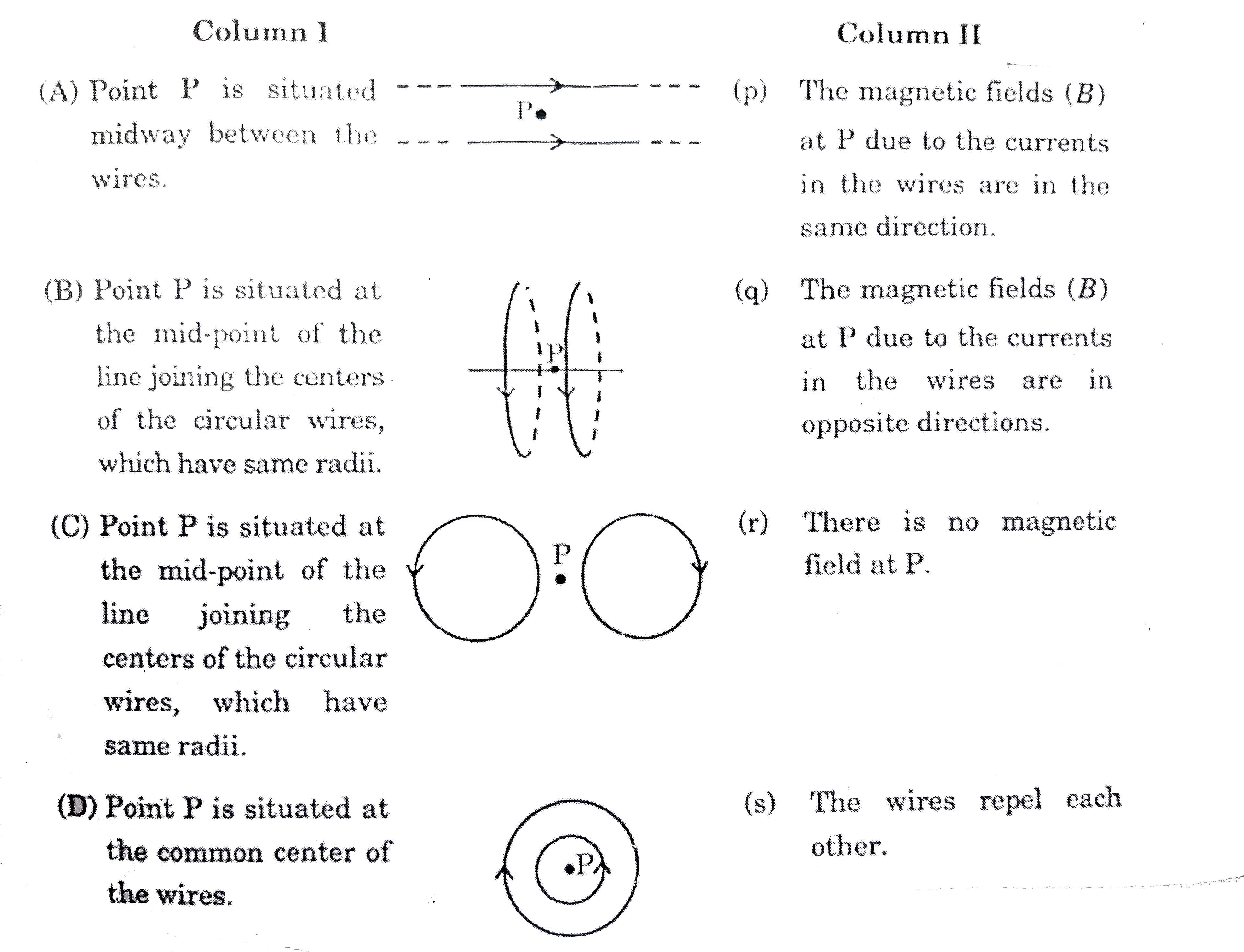 09:56View Solution
09:56View SolutionColumn I gives some devices and Column II gives some processes on which the functioning of these devices depend. Match the devices in Column I with the processes in Column II and indicate your answer by darkening appropriate bubbles in the `4 xx 4 ` matrix given in the ORS.
 06:38View Solution
06:38View Solution
MULTIPLE CHOICE QUESTIONS questions and complete solutions for chapter JEE ADVANCED of JEE ADVANCED PREVIOUS YEAR of Class 12
All Exercises from JEE ADVANCED Class 12 PHYSICS JEE ADVANCED
- MULTIPLE CHOICE QUESTIONS
- PART I : PHYSICS (SECTION -1)
- PART I : PHYSICS (SECTION -2)
- PART I : PHYSICS (SECTION -3)
- PART I : PHYSICS (SECTION 1)
- PART I : PHYSICS (SECTION 3)
- Part I : PHYSICS (Section 3)Paragraph 2
- PART I: PHYSICS SECTION-2: (Paragraph Type)
- PART I: PHYSICS SECTION-3: (Paragraph Type)
- PART I: PHYSICS Section-3:(Matching List Type)
- PART I: PHYSICS (SECTION-1) (One or more options correct Type)
- PART-1 PHYSICS (SECTION 1 )
- PART-1 PHYSICS (SECTION 2 )
- PART-1 PHYSICS (SECTION 3 )
- PHYSICS
- PHYSICS SECTION - I : Single correct Answer Type
- PHYSICS SECTION - II : Multiple correct Answer Type
- PHYSICS SECTION - III Integer Answer Type
- PHYSICS SECTION - IV Matrix Match Type
- SECTION - 1 (ONE OR MORE THAN ONE OPTIONS CORRECT TYPE)
- SECTION - 1 (ONLY ONE OPTION CORRRECT TYPE)
- Section - I Single correct Answer Type
- Section - II (Multiple correct Answer Type)
- Section - III (Paragraph Type)
- Section - IV (Integer Answer Type)
- Section -(III) (Paragraph type)
- SECTION -1
- SECTION -2
- SECTION -2 ( ONE INTEGER VALUES CORRECT TYPE)
- SECTION -2 COMPREHENSION TYPE
- SECTION -3 (MATCHING LIST TYPE)
- Section -IV (Integer type)
- Section -IV (matrix type)
- SECTION 1
- SECTION 2
- SECTION 3 PARAGRAPH 3
- Section I : Single Correct Answer Type
- Section II : Paragraph Type
- Section III : Multiple Correct Answer(s) Type
- Section-1
- Section-2
- SECTION-I (Single correct Choice Type )
- Section-I (single correct choice type)
- SECTION-I( Single Correct Choice Type )
- Section-II (Integer type)
- SECTION-II ( Multiple Correct Choice Type )
- SECTION-II (Multiple correct Choice Type )
- Section-II (Multiple correct choice type)
- SECTION-III ( Comprehension Type )
- SECTION-III (Comprehension Type )
- Section-III (Paragraph)
- SECTION-IV (Integer Answer Type )
- SECTION-IV( Matrix-Match Type )
